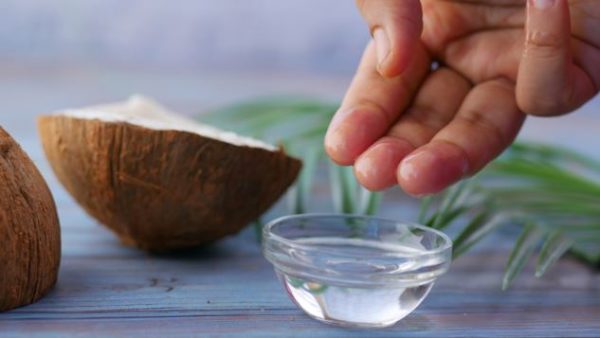Lifestyle
5 surprising side effects of Coconut oil

Coconut oil is one of the richest sources of saturated fat, which is beneficial to health, and many people opt for it because of it’s benefits to skin.
However, if you’re not careful about when and how you use this product, the risks of coconut oil can become apparent.
Virgin coconut oil, which is the purest form of the oil doesn’t have side effects, but when it’s processed into the commercial oil, it develops side effects.
Although coconut oil is a natural source of vitamins and fats which have numerous health benefits, too much of anything can be dangerous. The best way to use coconut oil is by using the right quantity.
Today’s post will show you the side effects of coconut oil you probably didn’t know about. Check them below!
1. Diarrhea
This is the most common side effects of coconut oil. When coconut oil is taken orally to fight the internal bacterial infection, the process of destroying the bacteria can lead to certain short-term side effects like diarrhea. Coconut oil causes diarrhea when it’s not consumed in the right quantity.
2. Increase cholesterol levels
Coconut has high levels of LDL (the bad cholesterol) and good HDL cholesterol, this can still be troubling to people who already have a high amount of cholesterol in their bloodstream. The saturated fat content in coconut oil is higher than other fats or oils (butter or olive oil).
It has been found that high levels of saturated fat lead to an increase in bad cholesterol, which can eventually result in health complications.
3. May cause allergies
Ensure you find out what you’re allergic to before consuming coconut oil. You can check by applying a little amount to your skin, to see changes. Coconut oil does cause allergies if one is sensitive to it. Some of the allergic reactions include nausea, rashes, eczema, hives, vomiting, and anaphylaxis (a lethal emergency that involves troubled breathing).
4. Headache
Individuals undertaking detoxification using coconut oil (for yeast infections) often experience headaches. This happens when the medium-chain fatty acids in coconut oil break down the yeast cells (that causes the infection), thereby releasing a wave of fungal toxins into the bloodstream. This, therefore, causes a headache.
This is more likely to happen to individuals with excessively oily skin. The lauric acid in coconut usually helps in killing the acne-causing bacteria for a skin that’s not oily. Otherwise, there could be a problem. The only way an oily skin can use coconut oil is by mixing with a friendly essential oil to get rid of that acne.
NOTE: All these side effects occur when the coconut oil extracted has been adulterated for commercial use.










